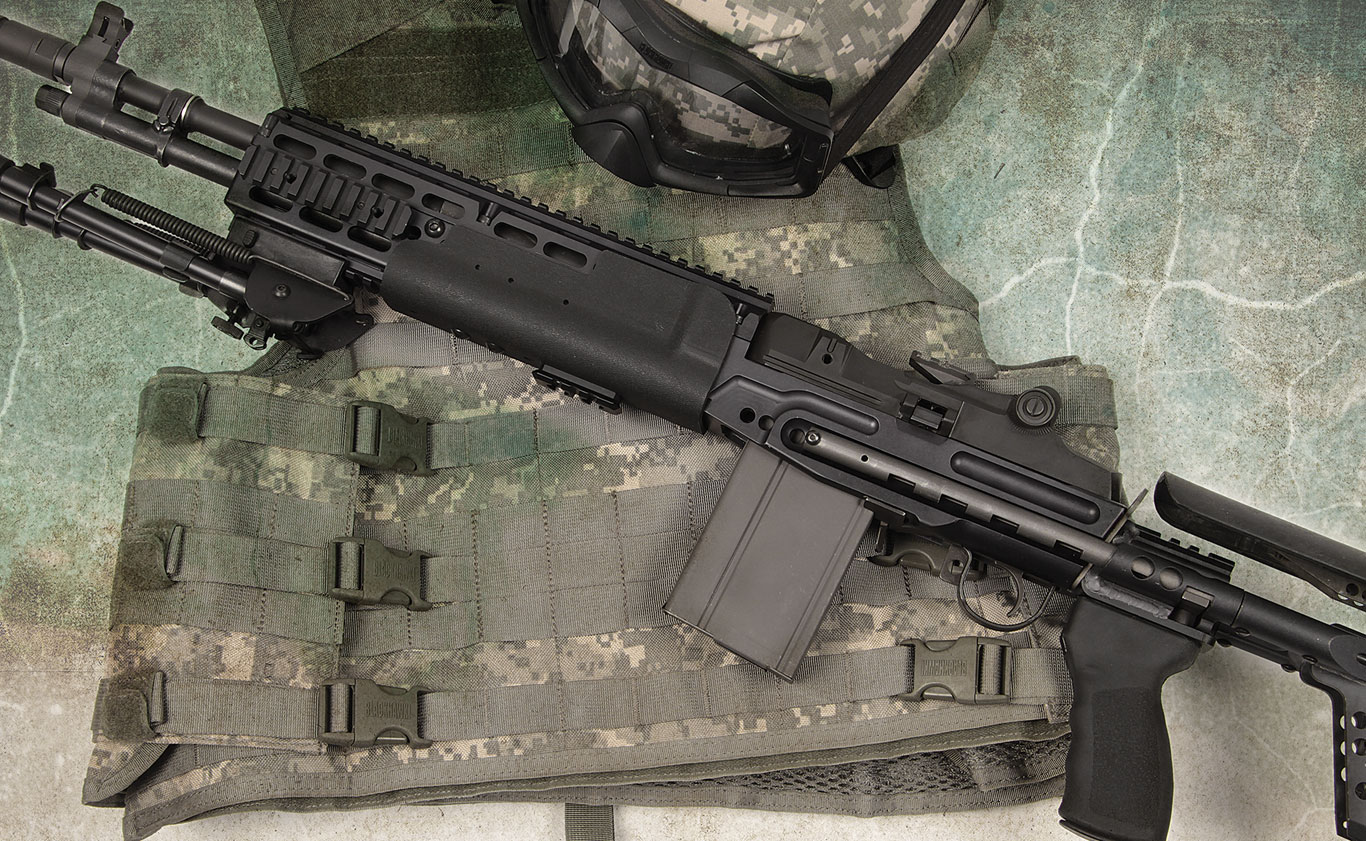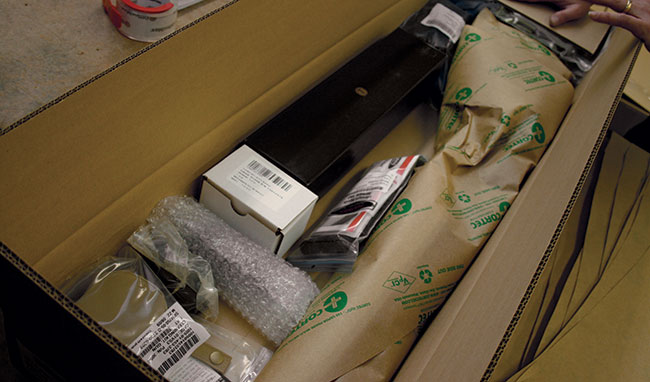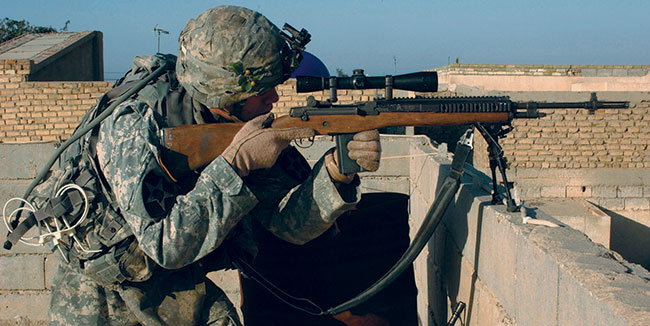First published in Combat Arms in 2011.

The M14 EBR-RI
We met Doug Carlstrom inside a simple reinforced structure reminiscent of the Cold War. It’s subtly located in a corner of the 946-acre island within the historic gates of Rock Island Arsenal. A career U.S. Army veteran with experience brought back from the Vietnam War, Carlstrom has witnessed the military trials of nearly all modern infantry small arms spanning the adoption of the M9 and M11 pistols to more recent variants of the M16. In 2011 Carlstrom and his five-man team were continuing their service as civilian contractors to TACOM, leading the development, testing and issue of the M14 EBR-RI.

During trips to Iraq and Afghanistan, Doug Carlstrom of TACOM observed soldiers trying to adapt rack-grade M14s and M21s with commercial mounts, rings and optics.
“I was deployed to Iraq in 2004 and to Afghanistan in 2006 to open a small arms support center,” Carlstrom says. “I opened Camp Anaconda in Balad, Iraq, and started learning how soldiers were using their rifles. At that time, units were pulling M14s out of storage and issuing them to marksmen within a squad for more accuracy, range and effectiveness.”
The first M14 rifles were fielded to units as they came out of Anniston Army Depot. Those M14s were still wearing wooden or nylon stocks and a brown nylon handguard. They were equipped with only one magazine and had no provisions for optics. Carlstrom observed soldiers trying to attach commercial mounts, rings and optics to these M14s with little consistency or repeatable accuracy. After seeing soldiers trying to adapt the M14 to a modern battlefield, Carlstrom concluded that this situation was unacceptable. When he returned to CONUS, he set out to resolve this problem.

During trips

